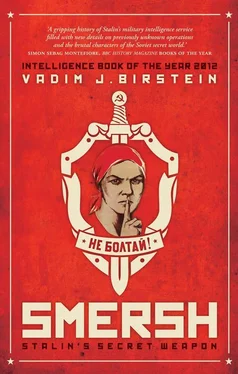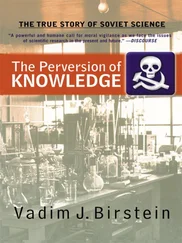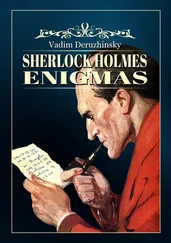At that time, Khrushchev was first secretary of the Communist Party and, no doubt, approved the indictments and outcome of the trial. Having been a member of Stalin’s inner circle, Khrushchev had, of course, signed off on many of Stalin’s orders between 1937 and 1953. According to some sources, when Khrushchev came to power, he also ordered the destruction of archival documents pertaining to his role in the Great Terror, during which, as first Party secretary of Moscow and the Moscow Province ( oblast ), he sanctioned thousands of arrests and executions.
Abakumov was one of the few people who, because of his close relationship with Stalin in 1943–51, knew the intimate details of how decisions were made by Stalin and the Politburo, including Khrushchev. Also, Abakumov and his leading investigators received personal instructions from Stalin and Politburo members regarding whom to arrest and what torture to apply. Obviously, Abakumov was a man who knew too much. After his trial, he was determined to share his knowledge. According to the memoirs of the executioner, he shot Abakumov in the back of the head while Abakumov was screaming, ‘I will write about everything to the Politburo.’ He was dead before he finished pronouncing the word ‘Politburo’. 79
But even before Beria was arrested, soon after Stalin’s death political prisoners who had managed to survive the purges began to be released from labor camps and prisons. 80This process continued for a few years. However, in order to receive a residency permit to live in Moscow or Leningrad, or obtain a professional job, former prisoners needed to be ‘rehabilitated’.
Being rehabilitated constituted an official recognition that the political prisoner had been convicted unlawfully and restored the person’s civil rights. 81By April 1, 1954, 448,344 prisoners sentenced for committing ‘counterrevolutionary crimes’ were still in the labor camps and prisons. 82In May 1954 the specially created Central Commission for reconsidering the cases of those sentenced for ‘counterrevolutionary crimes’ started work, and the Military Collegium also began to reconsider many political cases even before Khrushchev’s historical speech about Stalin’s crimes in February 1956. Soon it appeared that in thousands of cases, including military ones, there was no family member to whom the Military Collegium could report the rehabilitation, since the whole family had perished in purges. 83As for imprisoned foreigners, they were released and repatriated, mostly in 1954–56.
The following statistics cast light on the enormous work of rehabilitation: from 1918 to 1958, 6,100,000 arrestees were convicted in the Soviet Union of committing anti-Soviet (political) crimes, of whom 1,650,000 were executed. 84Of the total number, approximately 1,400,000 political convicts had in fact committed the alleged crimes (for instance, those who joined the Nazi troops and security services during the war), and 4,700,000 were absolutely innocent. Additionally, there were between 2.5 and 7.0 million people, spetspereselentsy (special deportees), sent into exile before and during the war.
In 1960 the infamous ‘political’ Article 58 was abolished, but it did not disappear completely. The new, ‘Khrushchev’ Criminal Code included separate articles on treason, espionage, terrorism, sabotage, and wrecking. But paragraph 58-10 (anti-Soviet propaganda) was transformed into Article 70: ‘Anti-Soviet agitation and propaganda being carried out in order to undermine or weaken the Soviet power… and dissemination, production or keeping works of the same content in the written, printed or other form for the same purpose is punished by imprisonment from six months to seven years and an additional exile from one to five years.’ Article 72 stipulated the same punishment for being a member of an anti-Soviet organization. As before, the NKVD/MGB, now the KGB ( Komitet gosudarstvennoi bezopasnosti or State Security Committee; Table 1-1), investigated such crimes.
In 1966, after Leonid Brezhnev (Communist Party leader from 1964–82) replaced Khrushchev, Article 190-1 was additionally introduced in the code. It stated that ‘a systematic dissemination of undoubtedly false fabrications that slander the Soviet power… is punished by imprisonment up to three years’. Since the 1960s, Soviet political dissidents were sentenced mostly under Article 70 or 190-1. However, some writers and poets were tried as ‘social parasites’ ( tuneyadtsy ).
In 1983–84, during the short tenure of Yurii Andropov, a long-time KGB chairman before he became general (first) Party secretary (Table 1-1), a new paragraph was included in Article 70 that made financial support of political prisoners and their families from abroad a crime, and Paragraph 3 was additionally introduced in Article 188, stating that ‘intentional disobedience’ to the camp’s administration—which could be, for instance, an undone button on the prisoner’s shirt—was punished by up to five years’ imprisonment. Potentially this article meant that a political prisoner would not ever be released.
Of course, the number of prisoners sentenced in the 1960s–80s for committing ‘anti-Soviet crimes’ was small compared with the political convicts of Stalin’s time, but political charges existed until 1989, when Articles 70 and 190-1 were finally abolished. For example, in 1976 there were 851 political prisoners in labor camps and Vladimir Prison, and of those, 261 were sentenced for anti-Soviet propaganda (Article 70). 85Additionally, the KGB warned up to 36,000 potential perpetrators whom it suspected of anti-Soviet activity.
The rehabilitation process stopped for a few years during Brezhnev’s time, but then it continued. By January 1, 2002, more than 4,000,000 former political prisoners had been rehabilitated. Except for a small group of Nazi collaborators like General Andrei Vlasov and his confidants, some White Russians, leaders of Soviet security services and real Nazis, all Soviet and many foreign prisoners mentioned in this book were rehabilitated. In other words, almost every serviceman, as well as most of the foreigners arrested by Soviet military counterintelligence during World War II and just after it, were innocent.
In the 1990s–2000s, there were even attempts to rehabilitate Beria and Abakumov. In May 2000, the Military Collegium of the Supreme Court of the Russian Federation refused an application by the members of Beria’s family to overturn the 1953 conviction. 86The court ruled that Beria and his accomplices could not be politically rehabilitated because of their crimes against the Soviet people. But the court found Dekanozov, Meshik, and Vlodzimersky guilty of abuse of authority, rather than of crimes against the state covered by Article 58 of Stalin’s time, and the sentence for them was posthumously changed from death to 25 years’ imprisonment.
A few years later, following the trend of security services-affiliated historians toward glorifying Stalin and his men, a 798-page book entitled Beria: The Best Manager of the 20th Century was published in Russia. 87It not only glorifies Beria, but also tries to persuade the reader that the crimes Beria committed were necessary for the progress of the Soviet economy, winning the war against Hitler, and successfully fighting the Cold War.
During the 1990s, the Supreme Court of the Russian Federation twice considered Abakumov and his co-defendants’ political rehabilitation. 88In July 1997, the Military Collegium of the Supreme Court found Abakumov, Leonov, Likhachev, Komarov, and Broverman guilty of abuse of authority, but not of political crimes. In December 1997, the Presidium of the Russian Federation Supreme Court posthumously changed the death sentence for these four to 25 years imprisonment in labor camps, and rescinded confiscation of property for all defendants. Chernov was totally rehabilitated in 1992.
Читать дальше












